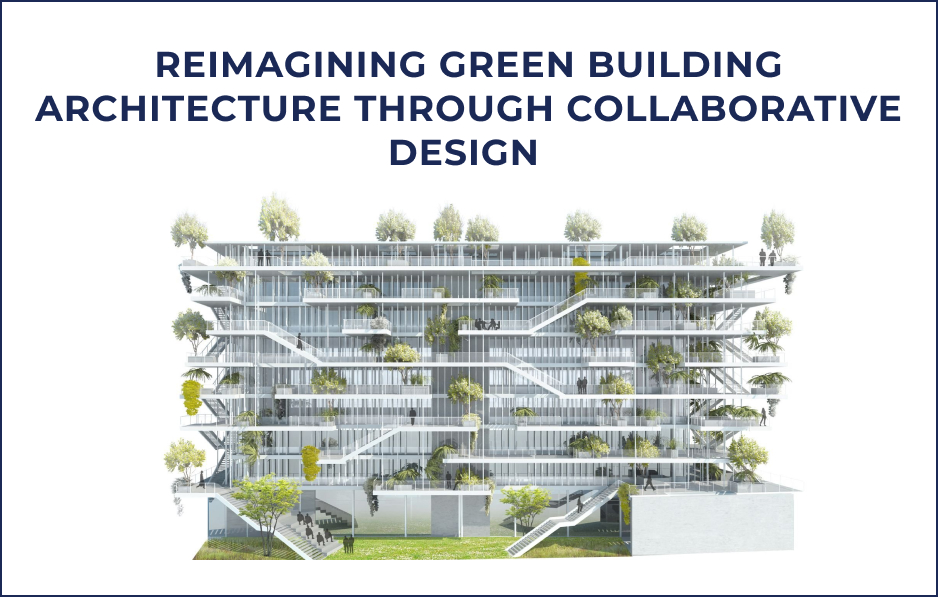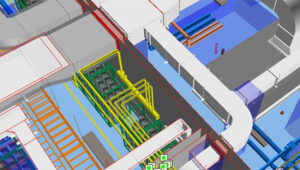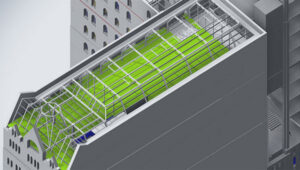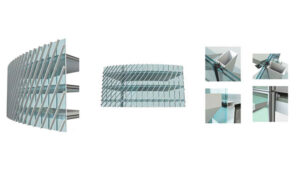If you’ve ever tried to align a project with sustainability goals, meet evolving compliance standards, and keep multiple teams on the same page, you already know the pressure.
Today, clients, governments, and communities are demanding cleaner, smarter, more resilient buildings.
The reason? Most traditional construction workflows simply weren’t built for that kind of complexity.
That’s where BIM services are quietly revolutionizing the way we work, especially when it comes to green building construction.
And if you’re serious about learning how to construct green building projects that actually deliver on performance and sustainability, understanding the role of BIM in it becomes even more important.
In this guide, we have discussed everything about green buildings and how they are becoming an essential part of the larger BIM lifecycle.
Let’s first understand the role of BIM in rethinking how we construct green buildings today.
The Role of BIM in Rethinking How to Construct Green Buildings

Let’s be practical: how to construct green building projects isn’t just about choosing the right materials or adding solar panels. It’s also about embedding sustainability into every decision, starting with the earliest drawings.
The good news is BIM services make this task possible and easy in several ways, like –
- Environmental analysis starts early:
Before a single wall is drawn, with BIM, teams can test various orientations, daylight access, passive cooling strategies, and energy loads.
- Materials come with data:
BIM allows for evaluation of embodied carbon, lifecycle costs, and recyclability before products are even specified.
- Reduced waste through precision:
With accurate modeling and quantity take-offs, construction waste is significantly reduced. Less rework. Less guessing. Less landfill.
And here, numbers speak for themselves. Integrated Revit-Insight 360 is shown to enable 21% lower energy use intensity (EUI) and 8.5% reduced lifecycle costs over baseline for an office building through rapid multi-objective optimization spanning orientation, envelope, and HVAC properties.
Moreover, sustainable construction helps your project with –
- Smart material choices: Designers can embed material attributes in the model, like thermal resistance, VOC content, or carbon footprint, and compare options in real time.
- Energy modeling: Integrated tools simulate HVAC performance, solar access, insulation impacts, and building envelope efficiency, all before systems are finalized.
- Waste reduction: Detailed takeoffs mean fewer surprises. Clash detection means less rework. And prefabrication becomes more viable when the model is tightly coordinated.
In short, BIM services don’t just support sustainability, they actually enable it.
Moreover, there are also studies that show that the average reduction in operating costs in the first 12 months for new green buildings is 10.5% and five-year operating costs savings are 16.9%.
The same study further discuss that green renovations and retrofits of existing buildings have even stronger performance globally at 11.5% and 17%, respectively while owners report that green new buildings and renovation/retrofit projects increase the asset value of buildings by more than 9%.
All of these data are not isolated wins. They reflect a growing industry shift where BIM services are used not just for efficiency, but as a foundational strategy for high-performance buildings.
High- performing buildings…They are always built with collaboration and teamwork. So how do BIM services help with this? Let’s have a look at that part in the following section.
Reimagining Green Building Architecture Through Collaborative Design

Green building architecture isn’t created in a vacuum. It takes the input of architects, structural engineers, MEP consultants, contractors, and increasingly sustainability specialists.
BIM services make that collaboration not just possible, but productive as
- The architect can test design scenarios for passive cooling.
- The engineer can evaluate structural implications and material impact.
- The contractor can spot prefabrication opportunities to reduce site waste.
- Everyone sees changes in real time, and decisions are made with full awareness.
This kind of integrated design process, facilitated by BIM, is what sets successful green projects apart from the rest.
With our years of BIM services, we have helped multiple clients where we helped them achieve their development goals in a sustainable way.
We particularly remember this one project where the client wanted to make sure of smooth coordination of architectural design, HVAC load analysis, and water efficiency strategies.
The BIM model was used not only for clash detection and energy modeling but also to generate documentation for certification, streamline procurement of low-impact materials, and track site waste.

The result? A building that exceeded its energy performance targets and met its green certification without last-minute compromises.
To put it in other words, we can say that the real value of BIM comes when it supports sustainability through the entire BIM lifecycle.
Green thinking shouldn’t stop after design approval or ribbon cutting; it should continue through operations and upgrades.
- During operation, the BIM model can be integrated with building management systems to monitor energy, water, and indoor air quality.
- During renovation, the model helps teams identify reusable components and estimate the environmental impact of upgrades.
- Even at end-of-life, BIM data helps inform safe deconstruction and material recovery.
Teams that maintain and update the model over time turn it into a living asset, one that supports not just the building’s performance, but its longevity and adaptability.
The good part about having BIM services for green building projects is that it brings multiple benefits to the table.
Advantages of Integrating BIM Services in Green Building Construction
Using BIM services for green building construction creates measurable benefits across the board.
When you integrate both of them, you will find your projects having –
- Reduced rework and coordination errors,
- Streamlined documentation for certifications,
- Better control over timelines and budgets,
- Improved material and energy efficiency, and
- Easier long-term facility management
We have seen that many development projects that adopted BIM early are now seeing the payoff, not just in project outcomes, but in client satisfaction and repeat business, too.
Now, if you are new to the BIM lifecycle environment and tools, there can be some hiccups too in the early stage, as discussed in the below section.
Common Challenges When Using BIM for Green Building Design and How to Overcome Them?

It is natural that whenever there’s a new technology, there will be some barriers to adoption, especially for smaller firms or those new to green design.
These challenges can include a lack of BIM-skilled staff, the initial high cost of software and setup, and integration issues with your existing legacy systems.
And to overcome these problems, we highly recommend starting small with a single project while focusing on early-stage modeling, leveraging cloud-based or open-source tools to reduce upfront costs, and investing in cross-training to help architects understand energy modeling and engineers understand design intent.
Yes, the transition takes effort, but it’s worth investing time and budget for it.
Future Trends in BIM for Sustainable Architecture and Construction

Today, the future of green building construction is being shaped by technologies that extend the power of BIM services even further.
And being in the industry for quite a long now, we see that the days are not far when
- AI will assist with design optimization based on climate and cost data
- Digital twins will support continuous performance monitoring
- IoT sensors will feed real-time data into BIM models to improve operations
- Policy and education will drive broader BIM adoption, especially in public-sector projects
With all the technological developments, we are moving toward a built environment where every decision is traceable, justifiable, and aligned with sustainability goals.
Final Thoughts on BIM Services Empowering a Greener Built Environment
The question isn’t whether BIM services can help create greener buildings, it’s rather whether you’re ready to use them to their full potential.
Whether you’re an architect, developer, or construction manager, learning how to construct green building projects with BIM will future-proof your work, reduce risk, and improve impact. Sustainability is no longer an add-on, as it’s the new foundation of the industry.
Now is the time to integrate BIM into your green building strategy and be a part of a future that shapes a built environment that actually works for the planet.
FAQS
BIM fosters collaboration by allowing architects, engineers, contractors, and sustainability specialists to work in a shared model, making real-time decisions and ensuring all design elements align with sustainability goals.
BIM helps in precise material planning, clash detection, and pre-fabrication, significantly reducing waste, rework, and unnecessary material consumption during construction.
BIM integrates tools for energy modeling, simulating HVAC systems, solar access, and building envelope performance to ensure the building meets energy efficiency targets.











